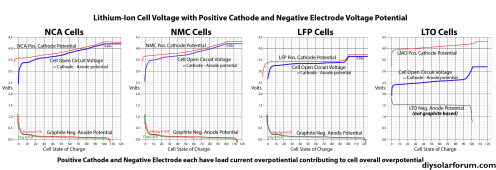Hello,
A rack mount 16 cell, 100 Amp hour battery, that is sold as a (website, specification sheets claim it) LiFePO4/Lithium Ferrous Phosphate battery but, the user manual from the manufacture does not contain the words “LiFePO4” or “Lithium Ferrous Phosphate”, what is the best way to verify the chemistry? Opening the battery case for inspection, what conclusively, proves the chemistry is or is not as advertised? Is it possible?
A rack mount 16 cell, 100 Amp hour battery, that is sold as a (website, specification sheets claim it) LiFePO4/Lithium Ferrous Phosphate battery but, the user manual from the manufacture does not contain the words “LiFePO4” or “Lithium Ferrous Phosphate”, what is the best way to verify the chemistry? Opening the battery case for inspection, what conclusively, proves the chemistry is or is not as advertised? Is it possible?



